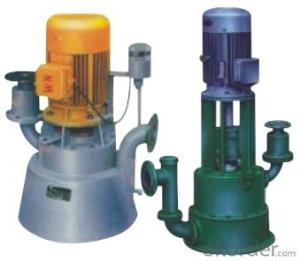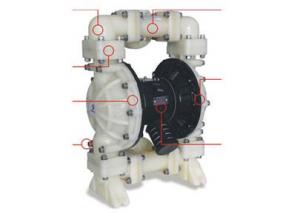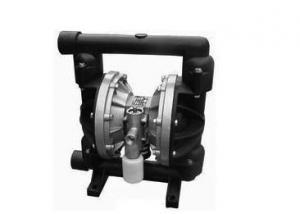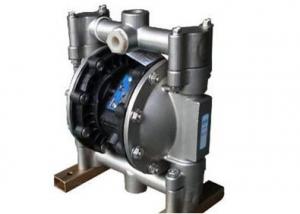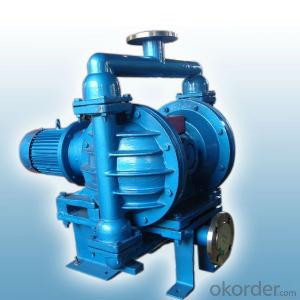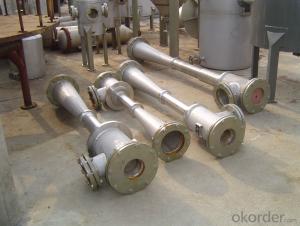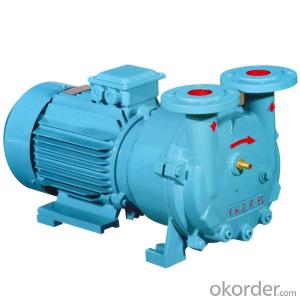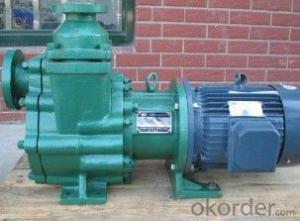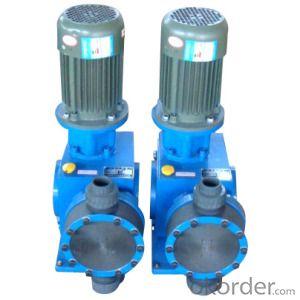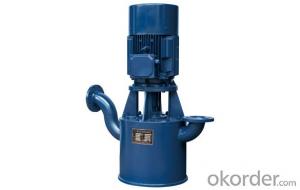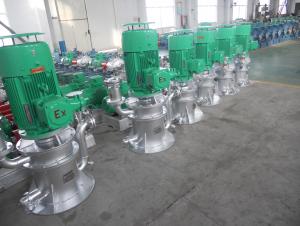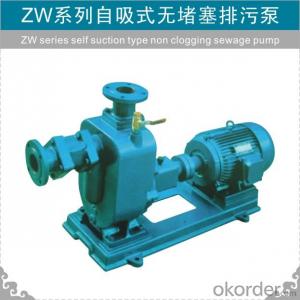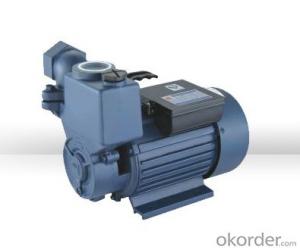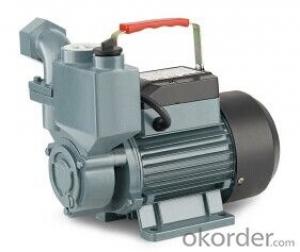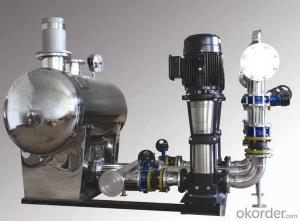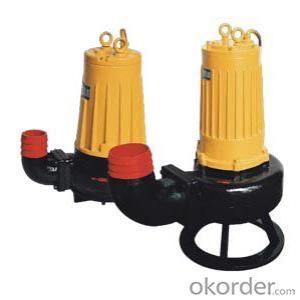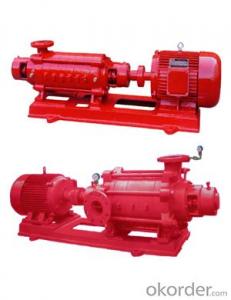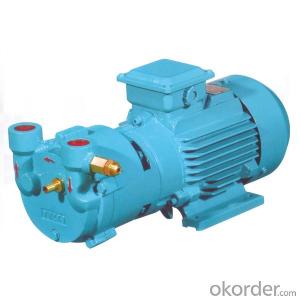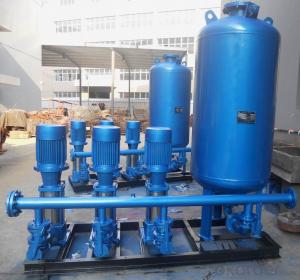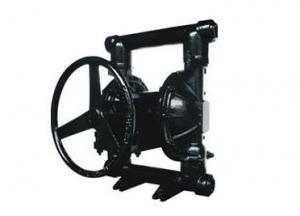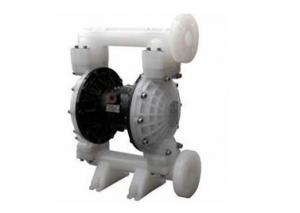WFB Series Non-Seal Self-Control Self-Suction Pump
- Loading Port:
- China Main Port
- Payment Terms:
- TT OR LC
- Min Order Qty:
- -
- Supply Capability:
- -
OKorder Service Pledge
Quality Product, Order Online Tracking, Timely Delivery
OKorder Financial Service
Credit Rating, Credit Services, Credit Purchasing
You Might Also Like
Outlined
WFB type no seal control self-suction pump, absorbs the domestic and foreign related products in the advanced experience of the foundation. Improved and innovative new product, is the traditional domestic products of the same products replace. The product has good resistance, stress and grinding, "for the first time, permanent drainage self-priming", etc. Products are cast iron, cast steel, stainless steel, reinforced polypropylene such as qualitative, five different modelling more than kinds of specifications.
Characterstics
1, the sealing is reliable. This pump USES no leak sealing devices, by secret sealing and with power of auxiliary seal. Instead of the traditional water pump of packing seal, mechanical seal, thoroughly solved the traditional sealed "run, run, drop, leakage", etc. The long axis submerged pumps, submerged pumps, submersible sewage pump and the most ideal products. 2, USES dynamic seal device. When running, no wear, the service life is a traditional product 10 times above; 3, power sealing device, lower cost 10 years for the operation cost of packing seal of 50%, for 70% of mechanical seal; 4, self-priming performance is stable and reliable, and especially the "electric air control valves", to achieve a truly "first drainage, permanent self-priming"
Application
Widely used in the electronics, electric power, chemical industry, metallurgy, medicine, food, fire control, environmental protection, electroplating, water purification, the municipal administration, the national defense, textile, mining, construction and other industries.
Working conditons
Flow: 0.75 6800 m3 / h
Head: 4-130 M
The liquid temperature: 40- 180 degree
Working pressure: The biggest 16 bar
WFB type no seal control self-suction pump, absorbs the domestic and foreign related products in the advanced experience of the foundation. Improved and innovative new product, is the traditional domestic products of the same products replace. The product has good resistance, stress and grinding, "for the first time, permanent drainage self-priming", etc. Products are cast iron, cast steel, stainless steel, reinforced polypropylene such as qualitative, five different modelling more than kinds of specifications.
Characterstics
1, the sealing is reliable. This pump USES no leak sealing devices, by secret sealing and with power of auxiliary seal. Instead of the traditional water pump of packing seal, mechanical seal, thoroughly solved the traditional sealed "run, run, drop, leakage", etc. The long axis submerged pumps, submerged pumps, submersible sewage pump and the most ideal products. 2, USES dynamic seal device. When running, no wear, the service life is a traditional product 10 times above; 3, power sealing device, lower cost 10 years for the operation cost of packing seal of 50%, for 70% of mechanical seal; 4, self-priming performance is stable and reliable, and especially the "electric air control valves", to achieve a truly "first drainage, permanent self-priming"
Application
Widely used in the electronics, electric power, chemical industry, metallurgy, medicine, food, fire control, environmental protection, electroplating, water purification, the municipal administration, the national defense, textile, mining, construction and other industries.
Working conditons
Flow: 0.75 6800 m3 / h
Head: 4-130 M
The liquid temperature: 40- 180 degree
Working pressure: The biggest 16 bar
- Q: How does an air pump handle different types of connectors?
- An air pump is designed to handle different types of connectors by incorporating various adaptors or fittings. These adaptors or fittings allow the air pump to connect to different types of valves or inflatables. For example, an air pump may come with a standard nozzle that fits most common inflatables such as air mattresses or beach balls. This nozzle can be used to inflate these items by simply fitting it onto the valve and turning on the pump. However, there are many other types of connectors or valves that require different fittings. To accommodate these, air pumps often come with additional adaptors or fittings that can be interchanged depending on the type of valve or connector. These adaptors or fittings may include a needle-like attachment for inflating sports balls, a tapered nozzle for inflating small inflatable toys, or a flexible hose for hard-to-reach valves. By using the appropriate adaptor or fitting, the air pump can connect to a wide range of connectors and inflate a variety of items. Overall, an air pump handles different types of connectors by providing a range of adaptors or fittings that allow it to connect to various valves or inflatables. This versatility ensures that the air pump can be used for multiple purposes and accommodate different connector types, making it a convenient tool for inflating various items.
- Q: How to prevent damage to an air pump from power surges?
- To prevent damage to an air pump from power surges, it is recommended to use a surge protector or an uninterruptible power supply (UPS) with voltage regulation. These devices will help absorb any power spikes or surges, ensuring a stable and consistent power supply to the air pump. Additionally, grounding the air pump and its power source can provide further protection against electrical disturbances.
- Q: What is an air pump and how does it work?
- An air pump is a device that is used to move air from one place to another. It is commonly used in various applications such as inflating tires, aquariums, air mattresses, and even medical devices. The basic principle behind an air pump is the conversion of mechanical energy into compressed air. There are different types of air pumps, but most operate using either a piston or a diaphragm mechanism. In piston air pumps, a piston moves up and down inside a cylinder. When the piston moves downward, air is drawn into the cylinder through an intake valve. As the piston moves back up, the air is compressed and forced out through an outlet valve. This process repeats to generate a continuous flow of compressed air. Diaphragm air pumps work similarly, but instead of a piston, a flexible diaphragm moves back and forth inside a chamber. As the diaphragm moves away from the chamber, it creates a vacuum that draws air in through an intake valve. When the diaphragm moves back towards the chamber, it compresses the air, which is then forced out through an outlet valve. Both types of air pumps can be powered by various sources such as electricity, manual operation, or even gasoline engines. The size and capacity of the air pump determine the amount of air it can move and the pressure it can generate. In summary, an air pump is a device that moves air from one place to another. It works by converting mechanical energy into compressed air, either through a piston or diaphragm mechanism. This compressed air can then be used for various purposes depending on the application.
- Q: What is the minimum noise level of an air pump?
- The minimum noise level of an air pump can vary depending on the specific model and brand. However, most modern air pumps are designed to operate quietly and typically have a noise level of around 40-60 decibels.
- Q: Can an air pump be used for inflatable party decorations?
- Yes, an air pump can be used for inflatable party decorations. It provides a convenient and efficient way to inflate balloons, inflatable arches, or other decorative items, saving time and effort compared to manually blowing them up.
- Q: Is the tire pump a good or a double cylinder?
- Parallel bars more pressure on inflation speed down
- Q: How to clean an air pump for optimal performance?
- To clean an air pump for optimal performance, follow these steps: 1. Unplug the air pump: Before starting the cleaning process, make sure the air pump is unplugged from the power source to avoid any accidents. 2. Disassemble the air pump: Carefully dismantle the air pump, following the manufacturer's instructions. Usually, you will need to remove the outer casing and detach any filters or other removable parts. 3. Remove any debris: Check the air pump for any dirt, dust, or debris that may have accumulated. Use a soft brush, cloth, or compressed air to gently remove any particles from the pump's components. Pay special attention to the intake and output valves, as any blockages in these areas can affect the pump's performance. 4. Clean the filters: If your air pump has filters, remove them and clean them separately. Rinse the filters under running water or soak them in a mild detergent solution to remove any dirt or residue. Allow them to dry completely before reassembling the pump. 5. Inspect the tubing: Check the air tubing for any signs of damage or clogs. If there are any blockages, carefully remove them using a pipe cleaner or similar tool. Replace any damaged tubing to ensure optimal airflow. 6. Clean the impeller: The impeller is a crucial component responsible for generating air flow. Gently remove the impeller from the pump and clean it with a soft brush or cloth. Make sure there are no obstructions or buildup on the impeller blades. If necessary, soak the impeller in a vinegar or citric acid solution to dissolve any mineral deposits. Rinse it thoroughly and dry it before reassembling the pump. 7. Reassemble the pump: Once all the components are clean and dry, carefully put the air pump back together following the manufacturer's instructions. Ensure that all the connections are secure and tight. 8. Test the pump: Plug the air pump back into the power source and test it to ensure it's working properly. Check for any unusual noises, vibrations, or reduced airflow. If any issues persist, refer to the manufacturer's troubleshooting guide or contact customer support for further assistance. Regular maintenance and cleaning of your air pump will help keep it running smoothly and maintain optimal performance. It is recommended to clean your air pump every few months or as specified by the manufacturer to prevent any potential problems and extend its lifespan.
- Q: How to use a car mounted air pump?
- The end of the thread is inserted into the cigarette lighter, and the air pipe is connected to the tyre air nozzle
- Q: How does an air pump regulate pressure in tires?
- An air pump regulates pressure in tires by using a motor to compress and push air into the tire. The pump is designed to automatically stop pumping air once the desired pressure level is reached, preventing over-inflation.
- Q: How does an air pump handle different power supply options?
- To cater to the diverse needs and requirements of users, air pumps are equipped with various power supply options. Most air pumps are designed to be versatile, providing convenience and flexibility in different situations. First and foremost, air pumps typically come with a built-in rechargeable battery. This allows users to operate the pump without requiring a direct power source. The rechargeable battery can be easily charged using a standard power outlet or a USB port, providing a portable and convenient power supply option. This is especially beneficial when inflating objects outdoors or in areas without access to electricity. Additionally, air pumps often feature an AC power adapter. This enables the pump to be directly connected to a power outlet, ensuring a continuous and reliable power supply. The AC power adapter is particularly useful when inflating large objects or when there is a need for extended operation without concerns about battery life. It guarantees a consistent power supply to maintain optimal performance. Furthermore, many air pumps offer a DC power adapter option. This allows the pump to be connected to a DC power source, such as a car's cigarette lighter socket or a portable power bank. This option proves handy when inflating objects while on the move or engaging in outdoor activities such as camping or road trips. It provides a convenient power supply option without relying on a traditional power outlet. In conclusion, the ability of air pumps to accommodate different power supply options ensures their adaptability and usability in various situations. Whether utilizing the built-in rechargeable battery for portability, the AC power adapter for continuous operation, or the DC power adapter for on-the-go usage, the pump can cater to different power supply needs of users in diverse settings.
Send your message to us
WFB Series Non-Seal Self-Control Self-Suction Pump
- Loading Port:
- China Main Port
- Payment Terms:
- TT OR LC
- Min Order Qty:
- -
- Supply Capability:
- -
OKorder Service Pledge
Quality Product, Order Online Tracking, Timely Delivery
OKorder Financial Service
Credit Rating, Credit Services, Credit Purchasing
Similar products
Hot products
Hot Searches
